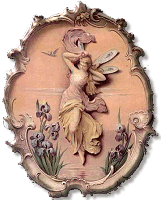
Many consider the Victorian Era as the
Golden Age of Poisoning.
Poisoning was an easy form of murder to get away with because it could be done in secrecy. Moreover, the proof necessary to convict someone in a court of law tended to rely on circumstantial evidence.
It was a popular homicide weapon because ...
• poison was readily available to the common person
• there was a new incentive called life insurance
• it produced little evidence — no marks, blood, or noise
• it could be done in secrecy
• evidence for poisoning was circumstantial in court of law
Some say poisoning was a common female defense against abusive husbands. During this era, approximately forty women were tried for poisoning their husbands. Then, as now, folks new this number was very underreported. As a result, Parliament restricted poison sales in 1851.
Poison most often used = arsenic
• arsenic use in rat poison & used in most homes
• women used arsenic for cosmetic purposes
• no one asked questions when a woman got arsenic from a shop in town
poison examples:
• Belle Gunness = long line of disappearing (rich) suitors found buried all over her farm = used arsenic with great gusto
• Madeleine Smith, an aristocratic young Glasgow woman, accused of poisoning lover with arsenic
• Thomas Young
• Donald Harvey = killed with cyanide
• Dr Harvey Crippen ... Even though this case was shortly after the Victorian era, it still had a Victorian committing the murder. He was married to Cora Turner but having an affair with his secretary, Ethel Le Neve. Cora disappeared. His mistress moved in with him and began to wear his wife's jewelry and clothing. Raised suspicion. Police began to investigate. Crippen panicked & moved to Canada. He almost got away with murder.
The Golden Age of Poisoning during the Victorian Era was the reason why toxicology as a field of medicine developed. As a science, toxicology became increasingly important ...
~ from the notes of Lady Victorian Historian




